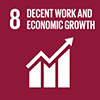Description/achievement of initiative
The Republic of Rwanda released its Green Growth and Climate Resilience National Strategy for Climate Change and Low Carbon Development in October 2011. The Strategy aims to build upon work that is already being done in Rwanda on climate change, focusing the various projects and policies in a holistic national document which encompasses the long-term direction as well as short-term priority actions. The Strategy is one of the initial steps on a pathway which leads to a sustainable, secure future where Rwanda is prepared for the risks associated with climate change, population growth and rising oil prices.
Source:
The strategy represents a critical step on the pathway to achieving sustainable economic growth based on building strong systemic climate resilience linked with deliberate low carbon production and lifestyle patterns.
The strategy sets a framework for mainstreaming climate change and the green growth approach in national socio-economic planning. It also provides for mechanisms to mobilize funding to finance programs identified in the process. A number of actions to be implemented are highlighted, and their roll-out will contribute to boosting employment, especially for youth and other groups with high levels of vulnerability to climate change.
In a context of high vulnerability to climate change, strong reliance on rain-fed agriculture, dependency on hydropower for half of national electricity generation, and endeavors to preserve our natural ecosystems and biodiversity, integrating adaptation to the effects of climate change with green growth emerged as a major barrier in developing the strategy. This was made more difficult by the limited understanding of the new concept of green growth against the business as usual development pattern for a country with very low emissions production patterns.
Lessons learnt that can be shared with other countries that want to pursue the same path include the prime role of national stakeholders to ensure ownership is effective.
The purpose of the Strategy is threefold:
1.To guide national policy and planning in an integrated way.
2.To mainstream climate change into all sectors of the economy.
3.To position Rwanda to access international funding to achieve climate resilience and low carbon development.
The focus of the Strategy is therefore firmly on climate resilience and low carbon development, addressing both adaptation and mitigation, whilst focusing on economic growth and poverty reduction. In the Strategy, Rwanda acknowledges that they have the opportunity to leapfrog old technologies and destructive development pathways and build a green economy that is resilient to shocks such as oil spikes and a changing climate.
Importantly, the Strategy is guided by five principles that relate to Rwanda?s broader development strategy to reach middle income status by 2020 and achieve the Millennium Development Goals: (i) economic growth and poverty reduction; (ii) welfare and wellness of all citizens in a growing population; (iii) gender equality and equity; (iv) sustainability of the environment and natural resources; and (v) good regional and global citizenship. Building on its vision for 2020, the Strategy includes a long-term vision for Rwanda to be a developed, climate-resilient, low-carbon economy by 2050. To achieve this, there are three key strategic objectives:
1.To achieve Energy Security and a Low Carbon Energy Supply that supports the development of Green Industry and Services and avoids deforestation.
2.To achieve Sustainable Land Use and Water Resource Management that results in Food Security, appropriate Urban Development and preservation of Biodiversity and Ecosystem Services.
3. To ensure Social Protection, Improved Health and Disaster Risk Reduction that reduces vulnerability to climate change impacts.
Implementation methodologies
Arrangements for Capacity-Building and Technology Transfer
Coordination mechanisms/governance structure
Partner(s)

